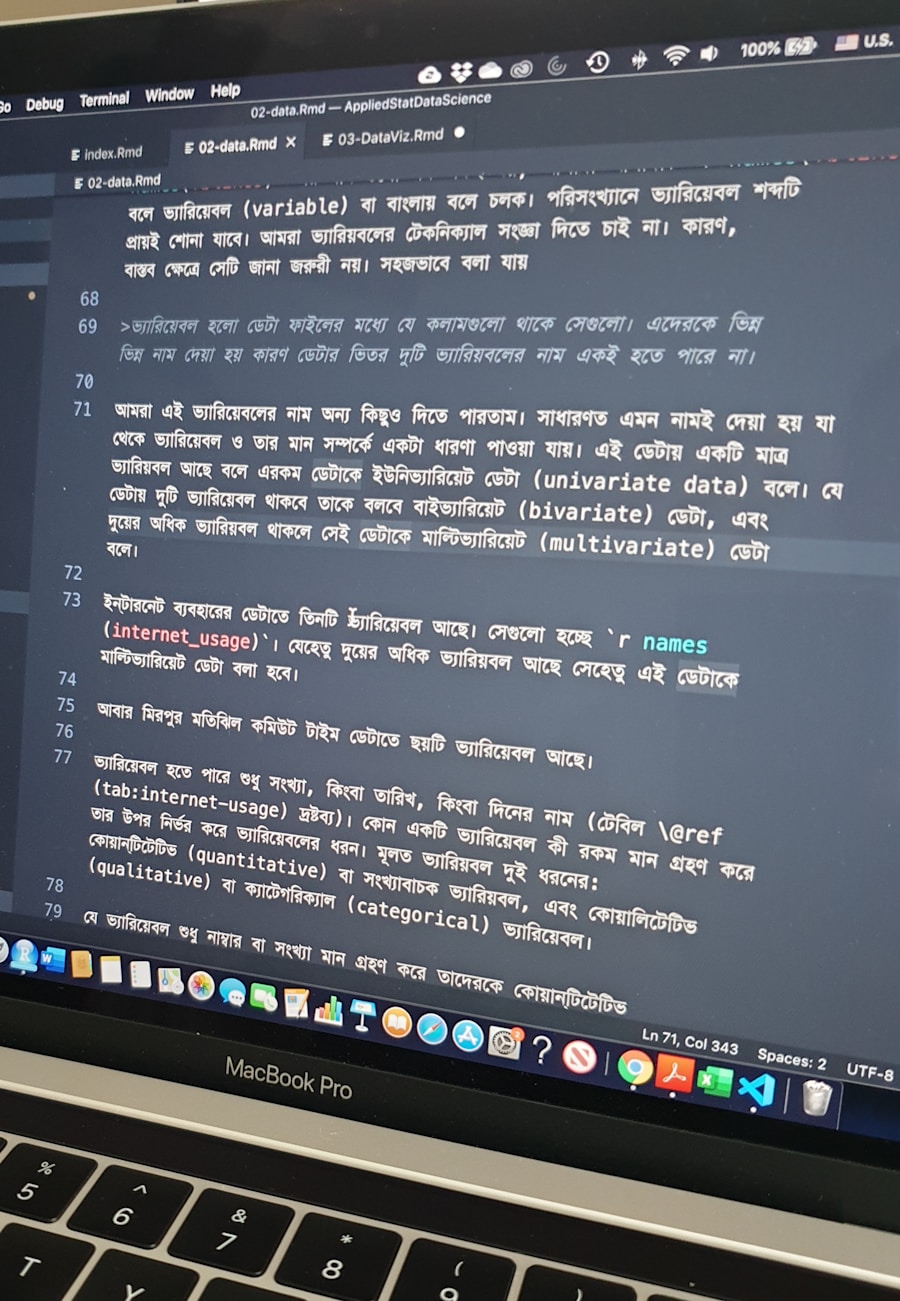Language Processing AI, often referred to as Natural Language Processing (NLP), represents a significant intersection of artificial intelligence and linguistics. This technology enables machines to understand, interpret, and generate human language in a way that is both meaningful and contextually relevant. The evolution of NLP has been driven by advancements in machine learning, deep learning, and vast datasets that allow algorithms to learn from human language patterns.
As a result, NLP has become an essential tool in various applications, from chatbots and virtual assistants to more complex systems that analyze sentiment and generate text. The importance of Language Processing AI cannot be overstated, especially in an era where communication is increasingly digital. Businesses, educators, and content creators are leveraging NLP to enhance their interactions with audiences, streamline workflows, and produce high-quality content at scale.
The ability of machines to process language not only improves efficiency but also opens up new avenues for creativity and innovation in content creation. As we delve deeper into the role of Language Processing AI in content creation, it becomes evident that this technology is reshaping how we think about writing, storytelling, and information dissemination.
Key Takeaways
- Language Processing AI involves the use of artificial intelligence to understand, interpret, and generate human language in a valuable way.
- Language Processing AI plays a crucial role in content creation by automating tasks such as writing, editing, and translating content.
- Language Processing AI is changing the content creation process by increasing efficiency, improving accuracy, and enabling personalization at scale.
- The benefits of using Language Processing AI for content creation include time savings, improved quality, and the ability to create content in multiple languages.
- Challenges and limitations of Language Processing AI in content creation include the need for human oversight, potential biases, and the inability to fully capture human creativity and emotion.
The Role of Language Processing AI in Content Creation
Language Processing AI plays a pivotal role in content creation by automating various aspects of the writing process. For instance, tools powered by NLP can assist writers in generating ideas, structuring articles, and even drafting entire pieces of content based on specific prompts or keywords. This capability allows content creators to focus on higher-level tasks such as strategy and creativity while leaving the more mundane aspects of writing to AI.
By analyzing existing content and understanding audience preferences, these tools can suggest topics that are likely to resonate with readers, thereby enhancing engagement. Moreover, Language Processing AI can significantly improve the quality of content through grammar checking, style suggestions, and readability assessments. Tools like Grammarly and Hemingway Editor utilize NLP algorithms to provide real-time feedback on writing quality, helping authors refine their work before publication.
This not only saves time but also ensures that the final product meets professional standards. Additionally, AI-driven content generation platforms can produce articles that are coherent and contextually appropriate, making them valuable assets for businesses looking to maintain a consistent online presence.
How Language Processing AI is Changing the Content Creation Process

The integration of Language Processing AI into the content creation process is transforming traditional workflows. One of the most notable changes is the speed at which content can be produced. With AI tools capable of generating text in seconds, organizations can respond to market trends and audience demands more swiftly than ever before.
This rapid production capability allows businesses to stay relevant in a fast-paced digital landscape where timely content can significantly impact engagement and conversion rates. Furthermore, Language Processing AI is democratizing content creation by making it accessible to individuals who may not have strong writing skills. With user-friendly interfaces and intuitive design, even those with limited experience can create compelling content using AI assistance.
This shift not only empowers more voices in the digital space but also fosters diversity in perspectives and ideas. As a result, the landscape of content creation is becoming more inclusive, allowing for a broader range of narratives and experiences to be shared.
The Benefits of Using Language Processing AI for Content Creation
| Benefits | Metrics |
|---|---|
| Time Savings | Language processing AI can reduce content creation time by up to 30%. |
| Improved Accuracy | AI can achieve an accuracy rate of over 90% in language processing tasks. |
| Enhanced Consistency | AI ensures consistent tone, style, and messaging across all content. |
| Increased Productivity | Content creators can produce 2-3 times more content with the help of language processing AI. |
| Cost Savings | Organizations can save up to 50% on content creation costs by using AI. |
The benefits of utilizing Language Processing AI in content creation are manifold. One of the most significant advantages is the enhancement of productivity. By automating repetitive tasks such as keyword research, topic generation, and even initial drafts, writers can allocate more time to creative thinking and strategic planning.
This increased efficiency can lead to higher output without compromising quality, allowing businesses to scale their content efforts effectively. Additionally, Language Processing AI can provide valuable insights into audience behavior and preferences through data analysis. By examining engagement metrics and user interactions with existing content, AI tools can help creators tailor their work to better meet the needs of their target audience.
This data-driven approach not only improves the relevance of the content but also enhances its potential for virality and shareability. As a result, organizations can achieve greater reach and impact with their messaging.
Challenges and Limitations of Language Processing AI in Content Creation
Despite its numerous advantages, the use of Language Processing AI in content creation is not without challenges. One significant limitation is the potential for generating content that lacks depth or originality. While AI can produce text that is grammatically correct and contextually relevant, it often struggles with nuanced understanding and creativity that human writers naturally possess.
This limitation can lead to generic or formulaic content that fails to engage readers on a deeper level. Moreover, there are ethical considerations surrounding the use of AI-generated content. Issues such as plagiarism, misinformation, and the potential for bias in AI algorithms raise important questions about accountability and authenticity in writing.
As organizations increasingly rely on AI for content creation, they must navigate these ethical dilemmas carefully to maintain trust with their audiences. Ensuring transparency about the use of AI in content production is crucial for fostering credibility and integrity in digital communication.
Best Practices for Integrating Language Processing AI into Content Creation

Define Clear Roles for AI and Human Input
Establishing clear guidelines regarding the use of AI tools is essential. This includes defining the specific tasks that AI will handle versus those that require human input. By delineating these roles, teams can maximize the strengths of both human creativity and machine efficiency.
Continuous Training and Refinement of AI Models
Continuous training and refinement of AI models are crucial for improving their performance over time. Organizations should invest in updating their NLP tools with new data sets that reflect current language trends and audience preferences.
Foster Collaboration Between Human Writers and AI Tools
Regularly evaluating the output generated by AI systems will help identify areas for improvement and ensure that the content remains relevant and engaging. Collaboration between human writers and AI tools is another best practice worth emphasizing. Rather than viewing AI as a replacement for human creativity, organizations should foster a collaborative environment where writers can leverage AI-generated insights while infusing their unique voice and perspective into the final product. This synergy can lead to richer content that resonates more deeply with audiences.
Future Trends in Language Processing AI for Content Creation
As technology continues to evolve, several trends are emerging in the realm of Language Processing AI for content creation. One notable trend is the increasing sophistication of generative models such as OpenAI’s GPT series or Google’s BERT. These models are becoming more adept at understanding context, tone, and style, enabling them to produce text that closely mimics human writing patterns.
As these technologies advance, we can expect even more seamless integration into various content creation workflows. Another trend is the rise of personalized content generation driven by AI algorithms that analyze user data to create tailored experiences. This personalization extends beyond mere recommendations; it encompasses dynamic content generation that adapts based on individual user preferences and behaviors.
As businesses strive to create more engaging experiences for their audiences, personalized content powered by Language Processing AI will play a crucial role in achieving this goal. Furthermore, ethical considerations surrounding AI-generated content will likely shape future developments in this field. As awareness grows regarding issues such as bias and misinformation, there will be an increased emphasis on developing transparent algorithms that prioritize ethical standards in content creation.
Organizations will need to implement robust frameworks for accountability while ensuring that their use of AI aligns with societal values.
The Impact of Language Processing AI on the Future of Content Creation
The impact of Language Processing AI on the future of content creation is profound and multifaceted. As this technology continues to evolve, it will undoubtedly reshape how we approach writing, storytelling, and communication across various platforms. The ability to automate routine tasks while enhancing creativity presents an exciting opportunity for individuals and organizations alike.
However, as we embrace these advancements, it is essential to remain vigilant about the ethical implications associated with AI-generated content. Striking a balance between leveraging technology for efficiency while maintaining authenticity and integrity will be crucial as we navigate this new landscape. Ultimately, Language Processing AI holds immense potential to enrich our communication practices and foster a more inclusive digital environment where diverse voices can thrive.












Leave a Reply